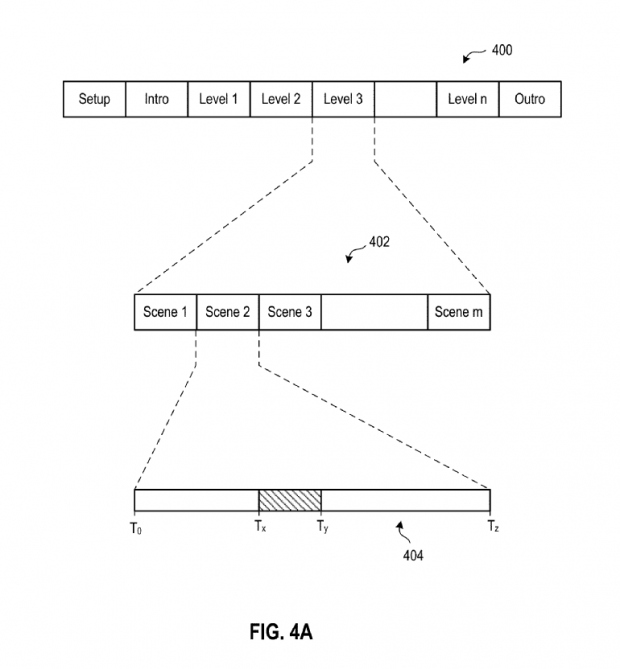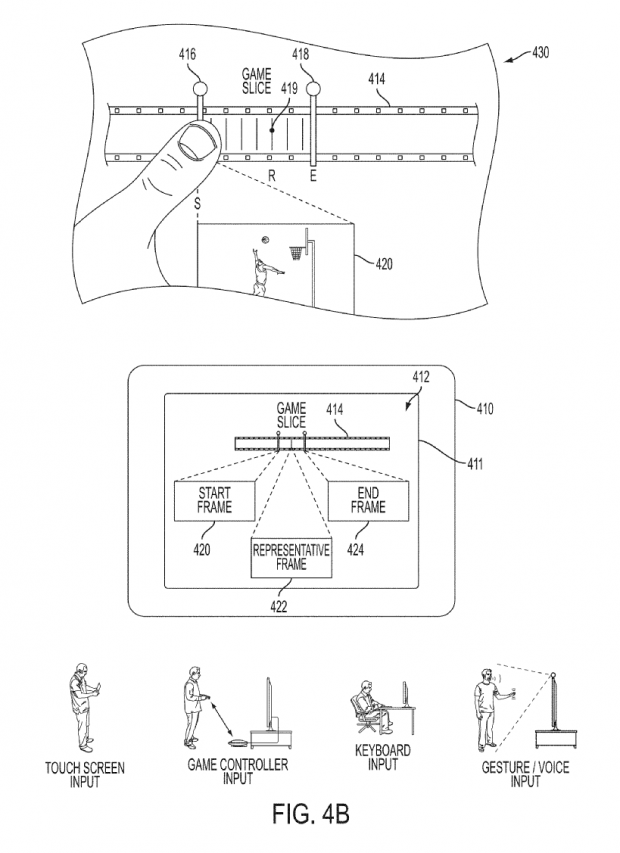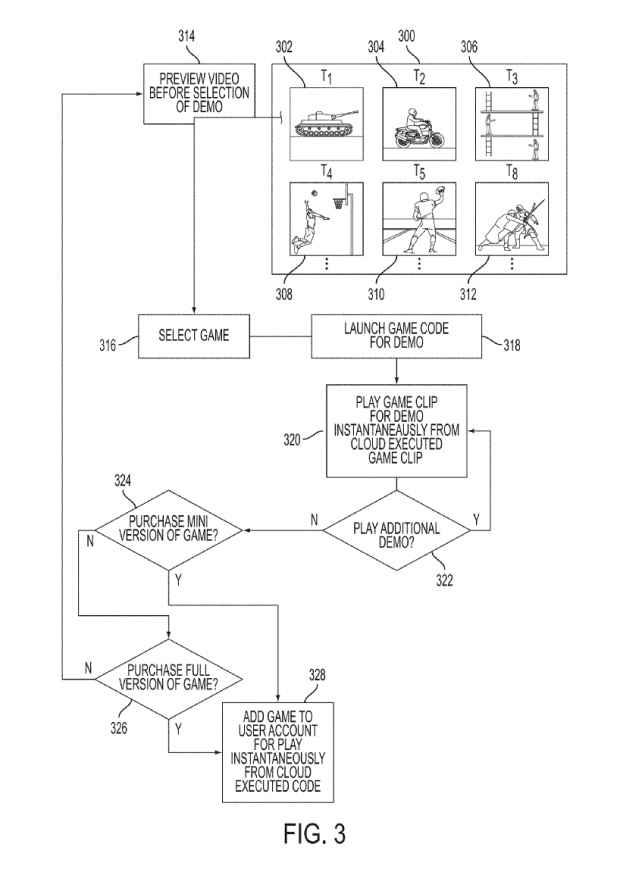A recent Sony patent shows how the PlayStation Network could get much, much more socially interactive, complete with save state sharing and user-created game demos.

Sony is currently ramping up its services to prepare for its next-gen PlayStation 5 console, and PS Now is a big part of that acceleration. But how can PlayStation Now actually evolve? It already allows offline downloads, and just got a cheaper $10 a month price tag. Now all it needs is more innovative and interactive social features that allow subscribers to spread the word organically, and to do that, Sony is taking plays out of Google Stadia's playbook while making some interesting moves of its own.
According to a new Sony patent, PlayStation Now's game streaming service may eventually let users share their saves with other gamers. The idea is to create a save point in a specific game, then beam it to a friend via social media or even email, who can then click on the link and take over. This isn't exclusive to PS Now, either, and should work with any game sold on the PlayStation Store.
It's an extension of Share Play and mirrors Stadia's save-state sharing functionality.
The most exciting part of the patent isn't necessarily about save-state sharing, though. It concerns game demos. The patent outlines how users can create their own customized small gameplay demos and send them to friends.


The new feature would let you edit slices of gameplay, piece them together in a free playable demo, and send them off to friends.
It specifically mentions that users can generate slices of a full game to create a kind of mini-game of sorts. The basic premise is users can clip whatever game they're playing, package it into a small slice, and send it off via social media.
The functionality works a lot like the built-in PlayStation footage editing software. But instead of editing a video, you'd be editing the playable portions of an actual game to your own custom liking, and then sending them off for someone else to play.
It'd be like watching a game clip that you can actually play. Creators could trigger certain things happen in the demo like pop up messages, images, and more
The main idea behind this feature is basically to advertise games in the best way possible. The patent would let users create interactive demos that can be sliced up and shared with users and other consumers. It could be a potent marketing and selling tool that organically promotes specific games in a bustling environment of tens of millions of online users.
After playing the small demo, gamers may have the choice of playing more user-created demos or buying the full game.

Here's the abstract of the patent, or the main summary of what the invention is trying to achieve:
A method for sharing a gameplay experience is provided, including: executing a video game by a cloud gaming system, wherein executing the video game includes processing a game state of the video game to provide gameplay of the video game; streaming the gameplay of the video game over a network, the gameplay of the video game being defined for a first user; receiving a command to share an interactive playable portion from the gameplay of the video game; responsive to the command, sharing the interactive playable portion of the video game through a social interface, the social interface enabling access for gameplay of the interactive playable portion by a second user.
This feature has tremendous potential to fill a gap that's currently not available on the PlayStation Network right now, all while fostering a new kind of interactive social engagement that PlayStation Now currently lacks and creating a more cohesive and aware market of subscribers and PlayStation consumers.
Like all patents, this particularly one is tremendously exhaustive and goes over various permutations and embodiments of the invention idea. There's no less than 23 figures, each with their own accompanying paragraphs of text describing how the features work. In short: Sony has thought this through and wants to cover all the bases.
It's worth remembering that nothing may come of this, and the patent itself could simply fizzle out and not be used. But there's a chance Sony could completely revolutionize how we see, think about, and play game demos.
Below we've outlined some of the more interesting claims that outline how this new feature could work:
FIG. 4A illustrates the hierarchical organization of various portions of a videogame, in accordance with an embodiment of the invention. By way of example, a videogame can be organized into various sections 400. In the illustrated embodiment, these may include a set up section, an introduction section, various level sections, and an outro section. A given level may be further divided into various scenes. As shown, the level 3 section is broken down into various scenes 402. As the user plays through a given scene, a gameplay timeline of that scene can be recorded, including recorded video of the user's gameplay as well as recorded input data and game states of the executed game application. In the illustrated embodiment, the gameplay timeline 404 as representative of the users gameplay of scene 2 of level 3 of the game. In accordance with embodiments of the invention, a user may select portions of their recorded gameplay from which to generate a mini game or game slice. For example, in the illustrated embodiment the gameplay timeline 404 has a start time T 0 and an ending time T z. a portion of the gameplay timeline from a time T x to a time T y has been selected from which to generate a minigame.
FIG. 4B illustrates an interface for selecting a portion of a gameplay timeline for generation of a minigame or game slice, in accordance with an embodiment of the invention. In the illustrated embodiment, the interface 412 is presented on a touchscreen 411 of a device 410. In one embodiment, the device 410 is a tablet computing device. The interface 412 includes a selectable gameplay timeline 414. In an expanded view 430 of the gameplay timeline 414, it can be seen that in one embodiment the gameplay timeline 414 is represented as a film strip with adjustable markers 416 and 418. The marker 416 designates the start point along the gameplay timeline 414 of the selection, whereas the marker 418 designates the endpoint along the gameplay timeline of the selection.
Furthermore, a marker 419 can be positioned within the portion of the gameplay timeline 414 that has been founded by the start marker 416 and the end marker 418. For ease of use and to provide the user with a visual understanding of what portion of their gameplay is being selected, a start frame 420 can be shown corresponding to the point along the gameplay timeline at which the marker 416 has been positioned. The start frame 420 is an image of the recorded gameplay video corresponding to the time at which the start marker 416 is positioned. Likewise, a representative end frame 424 can be shown corresponding to the point along the gameplay timeline at which the marker 418 has been positioned.
In a similar manner, the end frame 424 is an image of the recorded gameplay video corresponding to the time at which the end marker 418 is positioned. Additionally, a representative frame 422 may be displayed corresponding to the position of the marker 419 along the gameplay timeline.
The representative frame 422 can be utilized as a representative image for the minigame that is created based on the selected portion of the gameplay timeline. It should be appreciated that though in the illustrated embodiment a touchscreen interface is provided and described, in other embodiments various other kinds of input can be utilized to select starting and ending points to define a portion of gameplay for creation of a minigame.
For example, input can be provided via a game controller, a keyboard, via gesture input, voice input, and in accordance with other types of input devices and mechanisms so as to enable selection of a portion of gameplay along with selection of a representative image frame from the recorded gameplay video.
In some embodiments the selection markers may not be continuously adjustable along the gameplay timeline, but may be configured instead to snap to pre-defined time points along the gameplay timeline.
For example, predefined time points may be defined to correspond with specific events occurring in the gameplay timeline. The specific events of a given gameplay timeline for which predefined time points will be assigned can be generated based on analysis of the users gameplay, and will depend on the specific architecture of the videogame gameplay.
In one embodiment, predefined time points can be assigned based on geographical location of a character within a virtual world defined by the videogame.
For example, predefined time points can be assigned to the specific times at which a character moved from one geographical locale to another geographical locale, e.g. movement from one scene location to another scene location, movement from one city to another city, entering a structure, entering a room within a structure, entering the vehicle, entering a different type of environment, or any other kind of geographical transition of significance. In another embodiment, predefined time points can be assigned based on development of a user's character or entity which is controlled in the videogame.
For example, predefined time points can be assigned when a character or entity controlled by the user accomplishes a task, acquires a skill, acquires an object, passes a level or otherwise completes a portion of the videogame, or performs or achieves any other kind of significant activity in the video game.

